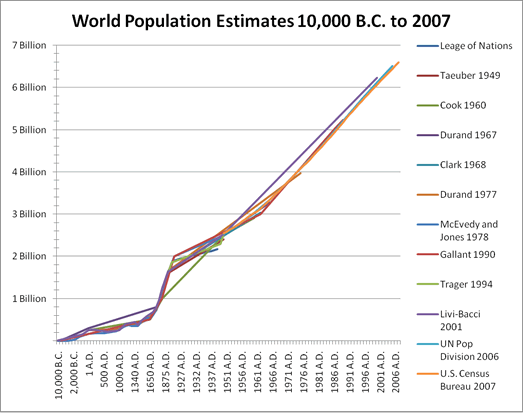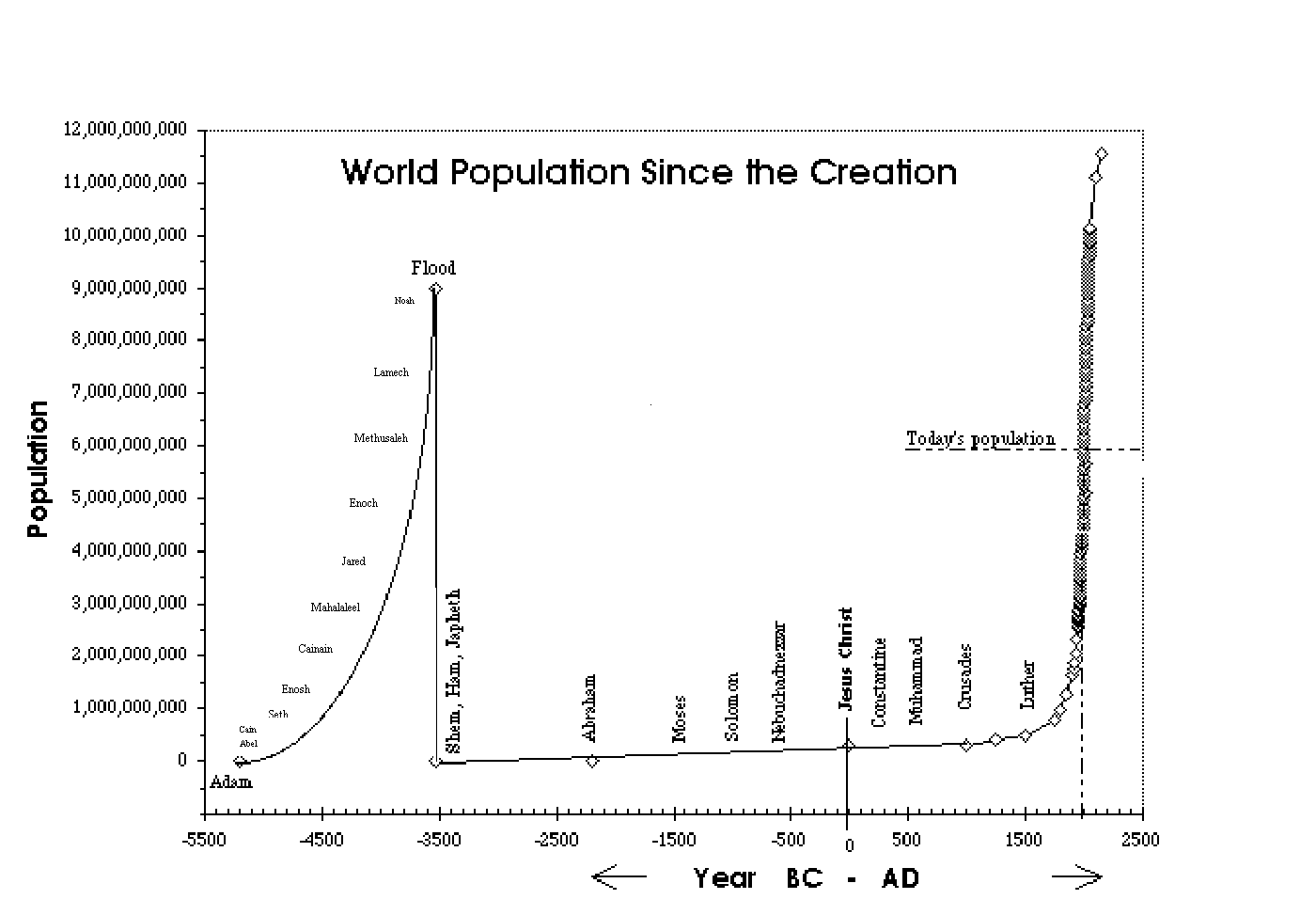"After 32 doublings, which is only 4,800 years, the world population would have reached almost 8.6 billion."
Assuming everyone survives to reproduce. In fact, there has been no such society, ever. Genetic data show that the vast majority of humans fail to leave descendants over the long run. A few dozen generations, and most lines die out.
"In reality, even with disease, famines, and natural disasters, the world population currently doubles every 40 years or so."
And famines, wars, pestilence, and other disasters were far more devastating in the past than now; AIG has it exactly backwards. Genocide is a crime in all nations today, and international courts enforce that prohibition. It used to just be the way things worked.
We do have data on world population in the past, and it's not the consistent upward line AIG supposes.
This graph is not linear with respect to time, but it gives you some idea of the way things worked. Notice that the great expansion of human population happened at the end of the Middle Ages, when technology began to accelerate.
Before that, the increase was very slow, and often reversed due to climate, disease, etc.
Here's an interesting graph from a creationist perspective:
Notice the author assumes an astonishingly rapid increase from Adam to Noah, even though evidence from historical sources shows such growth never occurs in pre-technological societies. That unscriptural assumption is the basis for such populations, although a human population of nine billion would certainly have left much more evidence than exists.





